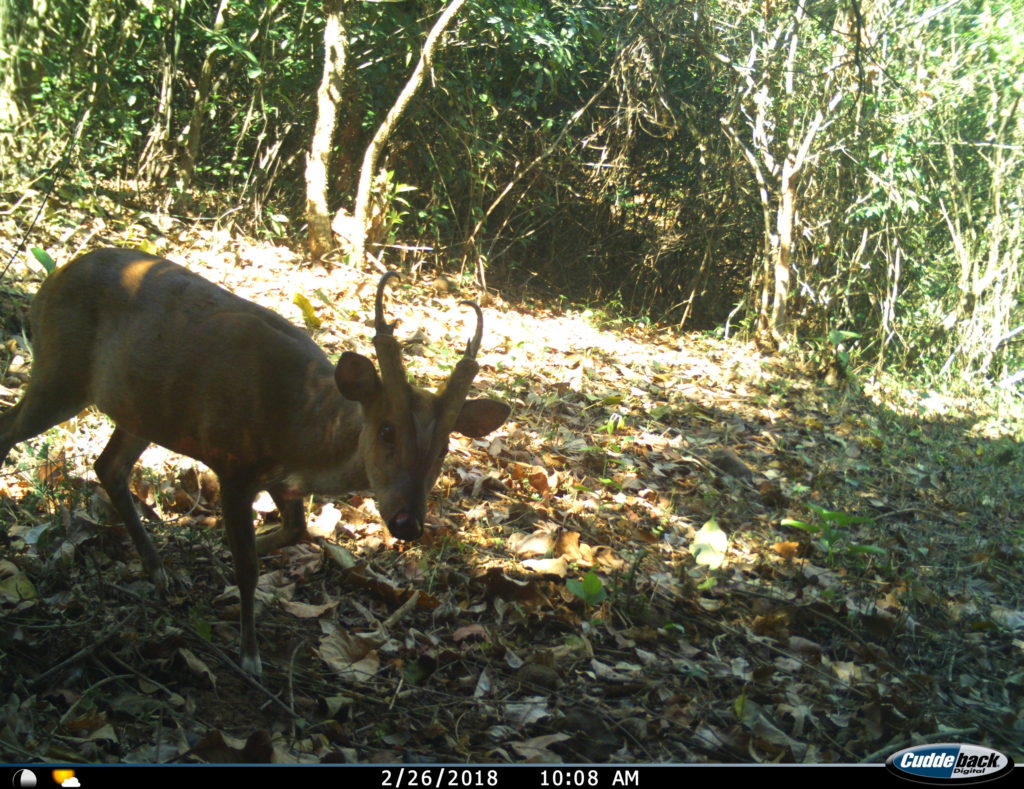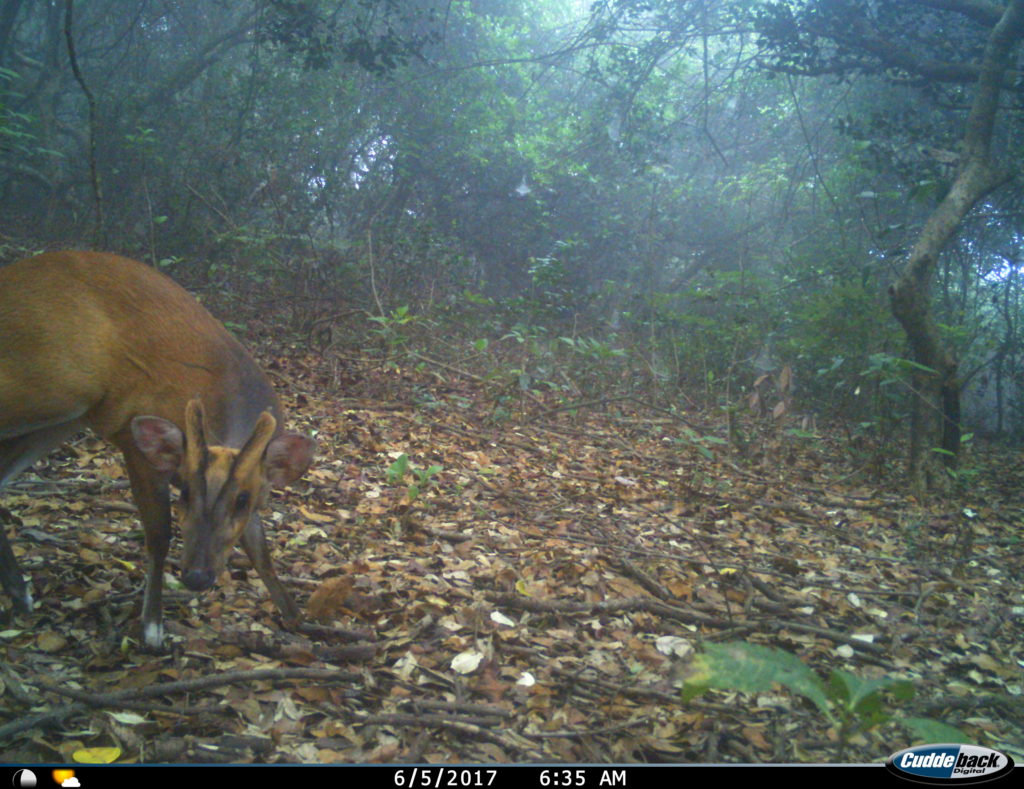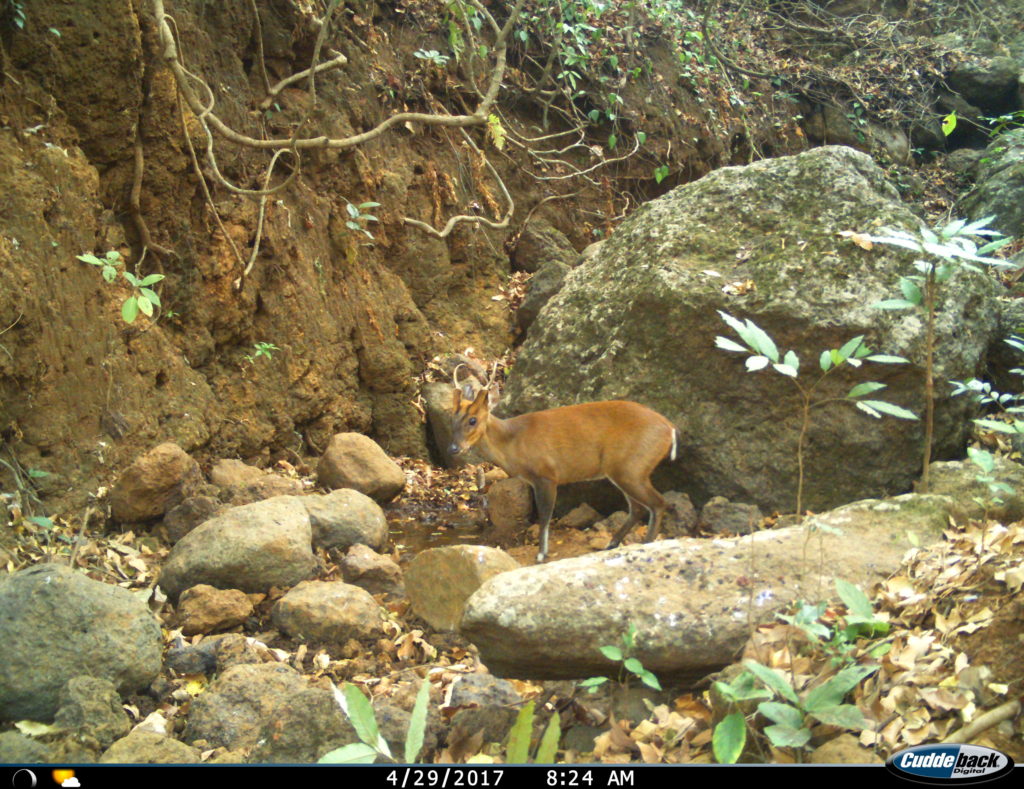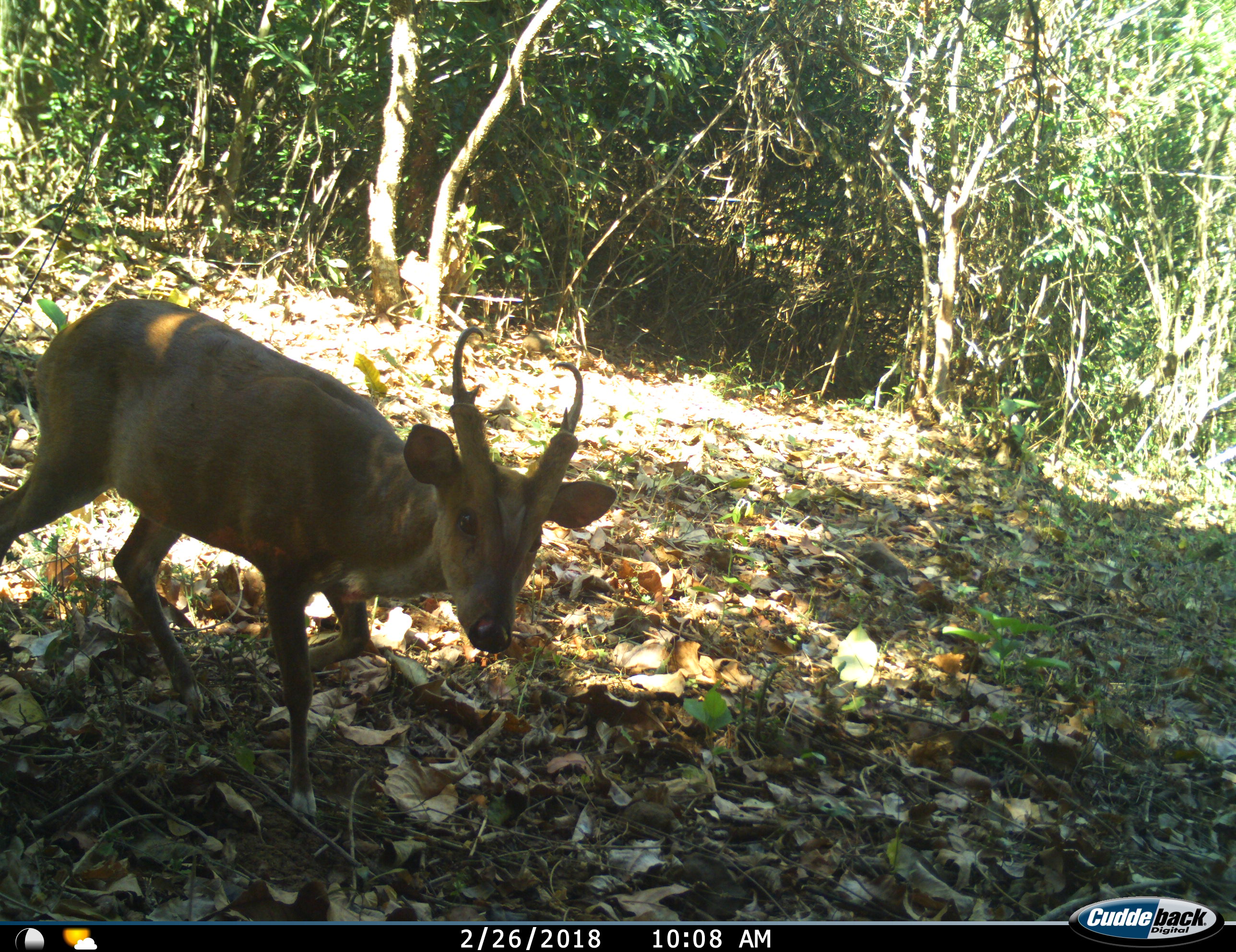A mighty muntjac! This small, but majestic cervid (deer family) comes from our recent crop of photos from students’ cameras in India. This is one of 12 species of muntjacs – the Northern Red Muntjac.

The males are known for having distinct curved antlers, and the bottom part is covered in skin and hair. These photos are all from males.

When I looked up the Northern red muntjac in Google Scholar, I was surprised to see a lot of phylogenetic studies on this species and not much else. Why would evolutionary biologists care so much about this smaller common deer?
It turns out that among the species, there is huge variation in the number of chromosomes. This muntjac has the lowest number of chromosome males have 7, while females have 6 chromosomes. This is weird in itself because generally males and females within a species have the same number of chromosomes (e.g. humans have 46). In contrast, the Reeves’s muntjac has a diploid number of 46 chromosomes. Muntjacs also have the oldest lineages of extant deer. I really never knew how cool muntjacs were!

Besides their genetics, they also have some fun anti-predator adaptations. They can use their antlers (although females don’t have them), but they also bark (which is why they are called the barking deer) and use their “tusks” (canine teeth). The males are territorial and will generally fight more via tusk rather than antler. What a fiesty little deer!
To check out more unusual animals we photographed on the eMammal camera traps in India, read “13 Amazing Camera Trap Photos from India Taken By Kids.”
Love this post? Share it with friends!




